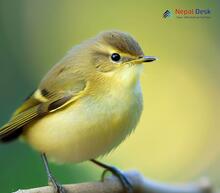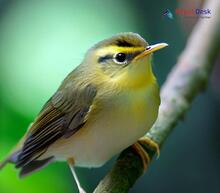The kingdom of Nepal is renowned for its diverse flora and fauna, drawing naturalists and bird enthusiasts alike from across the globe. Among this vast biodiversity, a unique genus of birds, Phylloscopus, stands out as one of the most fascinating species found within the region. In this article, we delve into the classification, common features, evolutionary relationships, and nomenclature of these captivating birds.
Classification and Common Features
Phylloscopus, or leaf warblers, are small insectivorous birds that belong to the family Phylloscopidae. They are predominantly found across Eurasia; however, their presence in Nepal holds special significance given the country's varied landscapes and distinct climate zones. Some common features of these birds include their generally dull plumage – which blends seamlessly with the foliage – and their slender beaks, making them well-adapted for feeding on insects found within leaves.
Evolutionary Relationships
The evolutionary relationships among Phylloscopus species are intriguing with numerous members discovered in Nepal. These relationships provide insights into their adaptation to different habitats within the country. Scientists have identified three primary lineages: those inhabiting tropical lowlands and subtropical forests at lower altitudes; those occupying temperate zones with mixed forests; and finally, those found in the higher altitudes of alpine ecosystems.
Recent molecular genetics research indicates that Phylloscopus has undergone extensive speciation events in response to various biogeographical processes that have shaped Nepal's topography through geological time. As a result, several sub-groups have developed unique traits and adaptations depending on their respective environments – highlighting nature's fascinating ability to respond to distinct ecological niches.
Nomenclature
The scientific nomenclature associated with the Phylloscopus genus can be filled with complexities due to historical inaccuracies and revisions. For example, several species were initially classified in the genus Sylvia; however, advancements in molecular techniques have helped uncover their true affiliations to Phylloscopus.
Nevertheless, despite these modifications, birders and scientific enthusiasts alike often find it challenging to distinguish between various species given their similar appearances and vocalizations. Thus, the importance of continuous research into their taxonomy cannot be overstated, as it not only clarifies inconsistencies within the field but also furthers our understanding of these enigmatic creatures.
In conclusion, the genus Phylloscopus presents a fascinating window into Nepal's diverse bird population. Through exploring their classification, common features, evolutionary relationships, and nomenclature, we gain a deeper appreciation for nature's wonders in this unique region. As researchers continue to uncover new information on the genus and its intricate relationships within Nepal's ecosystems, one can only imagine what further discoveries await us.




